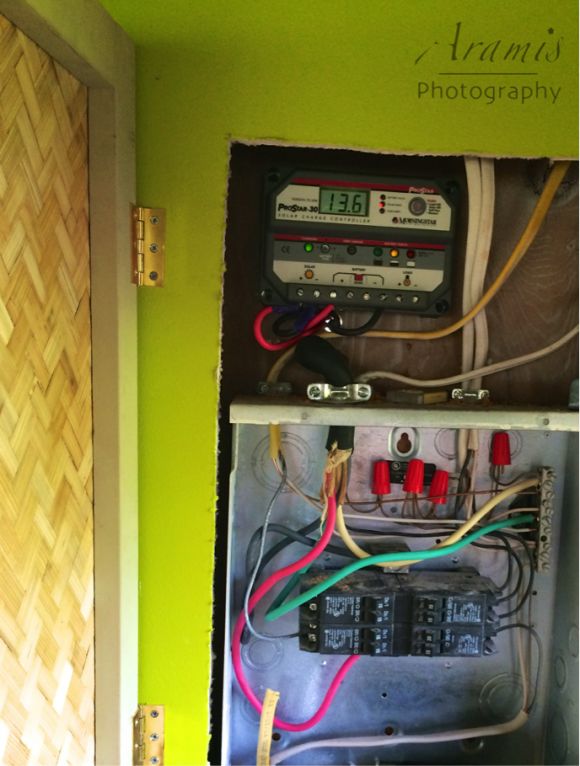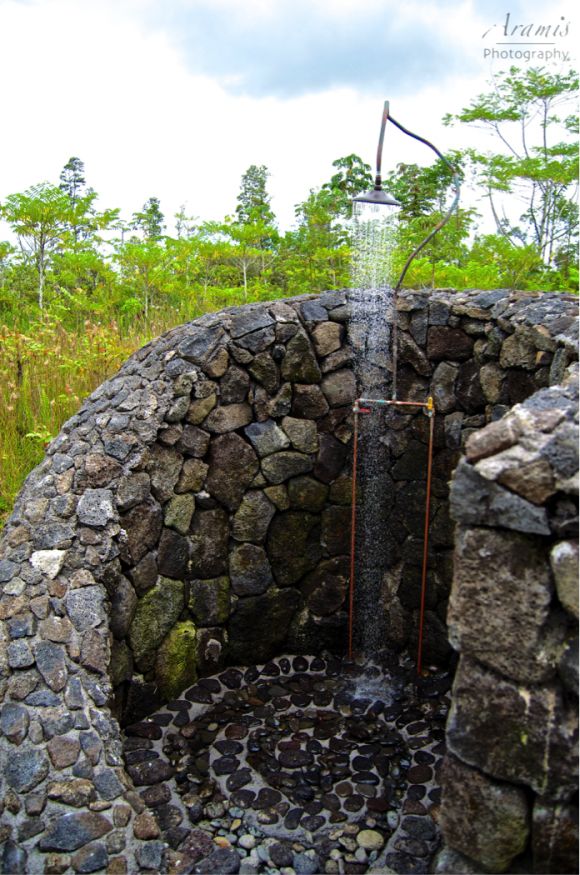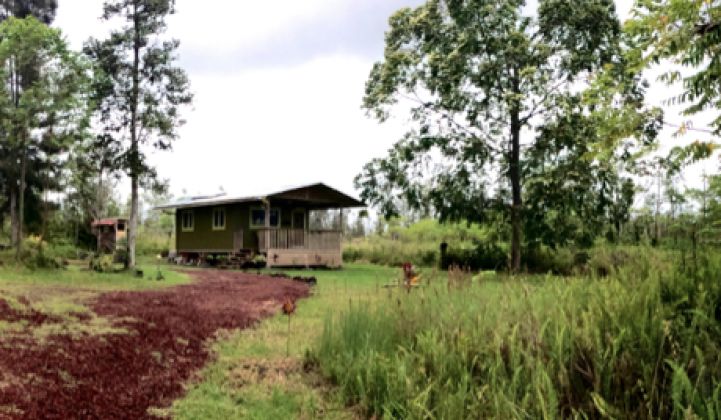Solar energy has been a passion of mine for well over a decade now, but it wasn’t until recently that I was able to install my own solar panels.
I’ve owned a couple of condos in Santa Barbara over the years, where I normally live, but the location of each condo and my small power bill ($20 to $40 per month) never justified going solar. I’ve now been renting in Santa Barbara for a couple of years and have been urging my landlord to invest in solar, to no avail.
I finally got to go solar when I bought some land earlier this year on the Big Island of Hawaii that included a run-down cabin. I decided to invest some money to retrofit the cabin and convert it into a tiny writer's residence and vacation rental. I also decided to go entirely off-grid, both for power and water.
PHOTO: My tiny home near Hilo, Hawaii

Hawaii has been making news due to its high saturation of solar power on the grid. Oahu, the most populous island, and the Big Island, the biggest island, have well over 10 percent of homes opting for solar. But these figures include only grid-tied homes. Hawaii’s utilities have dramatically slowed interconnection of new solar facilities due to increasing concerns about the stability of the grid. Going entirely off-grid is one solution to this growing problem. It has many other benefits, but also some downsides.
My little cabin is up a fairly long driveway and it would have cost many thousands of dollars to have my local utility, Hawaii Electric Light Co. (HELCO) install power at my place. This made going off-grid an easy decision. Since my cabin is small and the climate is warm all year long, it didn’t need a very big solar system.
In preparation, I read Michael Boxwell’s Solar Electricity Handbook. And with some help from a local solar installer who specializes in off-grid systems, I figured out the appropriate system size and equipment I’d need.
I wanted to do as much of the design and installation myself because I’ve been wanting to experience the process first-hand for some time. This was a perfect opportunity to get my lawyer hands dirty and take my eyes away from staring at my computer screen for a while.
Boxwell’s book is a great resource, and even though he's British, the advice applied just fine to the U.S. I decided to build a 24-volt system. Combining four batteries serially got me to 24 volts. Ditto with two solar panels, which are 12 volts each.
In looking at my power needs, I calculated that I could probably get by with just two 250-watt panels, for a total of half a kilowatt.
My equipment list included the two panels (Schott Solar, bought from ProVision Solar, a Hilo-based company owned by Marco Mangelsdorf, costing about $800 including racks to install them on my roof); a ProStar charge controller (bought from Off-Grid Solar Specialists for $350); a Schneider Electric inverter (from the same store, $1,200); four Interstate batteries ($130 each, bought from Pahoa Propane and Batteries); and a bunch of wire and battery connectors.
I did most of the installation myself, painstakingly and with much trial and error. I ended up needing an hour of a professional installer’s time to wrap it up, so the total cost of my system was about $3,500, or $7 per watt installed.
The batteries are 232 amp-hours each, but because they’re connected in serial fashion, they supply a total of 232 amp-hours at 24 volts. They are charged directly from the charge controller at 24 to 30 volts. The inverter connects to the batteries and the home’s central power panel connects to the inverter. When I leave for extended periods, I turn off the inverter but leave the charge controller running. This allows the panels to keep the batteries fully charged and healthy, while avoiding the risk of something going awry that could leave my batteries dead again.
The ProStar charge controller is addictive to watch, since it shows how much power is coming in from the panels and how full the batteries are. I think of this as a form of entertainment akin to watching TV.
I’ve seen as high as 38 volts coming in during very sunny times at midday. I was also pretty happy to see how much power comes in even when it’s cloudy or rainy -- from one-tenth to one-fourth of full power. Power production starts as soon as it gets light outside, but doesn’t really get going until a few hours after sunrise.
PHOTO: ProStar charge controller at my house

My pre-installation calculations showed that my little system could power a small fridge, lights, and a TV and DVR player, as well as chargers for computer and cell phone. I was happy to find that my calculations were accurate, but I did get worried a few times when I woke up in the morning and found my batteries very low, as evidenced by the blinking red light on the charge controller. But by noon or mid-afternoon, my batteries go back to green.
My new lava-rock wall shower, fed by rainwater and powered by the sun, is also in business. When water falls from the sky, it's stored in a catchment tank and put through a filtration and pumping system. This is a sustainable and healthy solution for water that doesn’t involve the authorities at all.
PHOTO: Off-grid lava rock shower

It can be challenging at times being off-grid, particularly when you’re working out the kinks. I initially installed the system in April this year, and then I returned to Santa Barbara for a few months. When I went back to Hawaii in July, I found my solar system down and my batteries dead. I couldn’t figure out what happened, so I called the same local installer who had helped me wrap up installation in April. He diagnosed loose battery connections as my problem. I had to take the batteries back to the store to charge them back up. That took three days, for various reasons, so I was living without solar power for a week.
I didn’t mind it too much, since I have plenty of candles and had also purchased a kerosene lantern. I enjoyed the primitive living conditions. I also have a backup generator for when I needed to charge my computer and phone. The fridge was the only thing that I really missed. But since I was only in Hawaii for three weeks on that trip, I wanted to get the system back up and running so that I could rent out my place while I was gone.
I was able to get the batteries re-installed and wired in snugly, but still my system refused to come back to life. I double-checked everything and called the installer again. No help. I went back to the store where I bought the charge controller and he agreed to give me a new one since it seemed that the problem must have been the charge controller. I re-installed it. Still nothing.
We finally figured out that I had been given the wrong configuration to install my panels, and that they were supplying twice the voltage that the charge controller could handle, so it had burned out. I rewired the panels and finally the whole system snapped back to life. It’s now been running fine for over a month and it should keep running fine for a long time (fingers crossed).
Another major benefit of being off-grid was highlighted during the recent hurricanes that threatened Hawaii. After Iselle hit the Big Island last Friday, well more than 20,000 utility customers went without power and were still without power on Sunday, at the time of this writing.
My tiny house, on the other hand, is running just fine with solar power and batteries.
Going off-grid in Hawaii can also be a big money-saver. Since most of the state's power is generated by imported diesel, power bills can be very high. My power bill would probably be about $100 per month if I were connected to the grid, but I’d also have to pay the large fee for building a line to connect to the grid.
With my off-grid system, all of my costs are upfront, and there are no ongoing costs except when/if things break down or go awry (again, fingers crossed).
I can’t calculate the payback time accurately, since I don’t have a power bill to compare my costs against. Based on my estimated $100 monthly bill I would, if I had been on-grid previously, pay off my system in about three years, but that again leaves out the cost of connecting to the grid in the first place.
I’m still very new to off-grid solar, and I may find new issues cropping up. But there are lots of benefits. Going solar allows me to avoid the emissions of dirty diesel, to avoid spikes in electricity rates, to avoid dealing with the utility on interconnection or net metering, and to be secure when the grid is down due to storms or falling trees.
***
Tam Hunt is owner of Community Renewable Solutions LLC, a renewable energy project development and policy advocacy firm based in Santa Barbara, California and Hilo, Hawaii.



